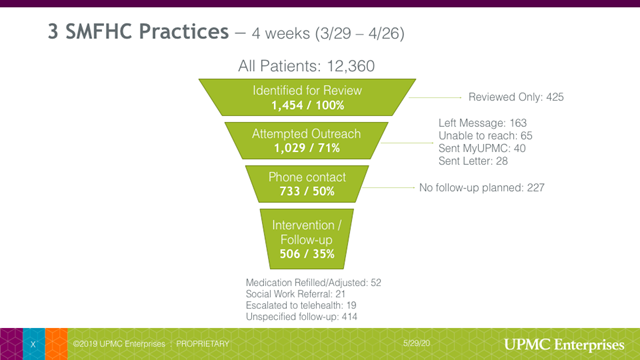In order for family physicians to make a difference in their patient panels and their communities, we have implemented a Population Health curriculum. This clinical care and educational intervention train residents to look at their own patient panel to address health disparities now, and for their future practice in years ahead.
This process was developed by our pharmacy faculty to improve quality metrics and was reinvigorated and refined during the COVID-19 pandemic, where our entire clinical staff was mobilized to provide remote virtual care in creative ways, reaching the patients in their homes while maintaining safety measures. Within the first four weeks of the pandemic lockdown in 2020, our multidisciplinary team led by family medicine residents outreached 1029 patients, connected over the phone/video with 733 patients, and had an in-person or virtual follow-up with 506 patients. Many positive health-related outcomes (including decreased ER utilization and suicide prevention) were documented by these efforts.
Since that time, our collaborative pharmacy and family physician team have strengthened our Population Health curriculum, creating a longitudinal educational and clinical experience for residents in all three years. Didactics, electronic health record review and data management, and telemedicine education have been folded into this program that prepares residents for practice in a value-based care environment.
Our residents work on Population Health with our Family Medicine & Pharmacy Faculty in all 3 years of residency:
- PGY1
- Goal: introduce the resident’s patient panel and specific quality and population health initiatives, as well as data management
- PGY2
- Goal: population panel review, telemedicine, and patient engagement to close gaps in care and chronic disease management/lifestyle medicine
- PGY3
- Goal: population panel review, telemedicine, QI project leadership, patient engagement

